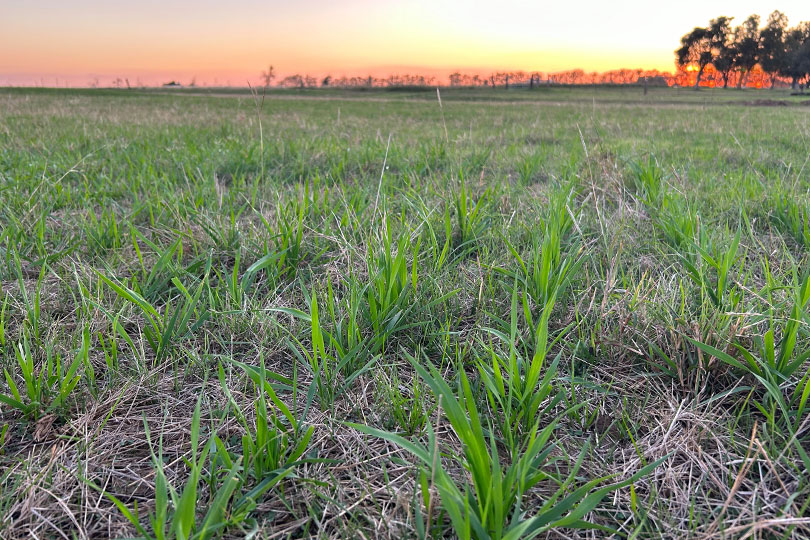By Emmy Powell
Communications Specialist
After a long, hot and dry summer, scattered rains finally fell across the Lone Star State this fall. Rain totals have ranged from four to 12 inches.
The moisture has been beneficial for pastures and winter crops.
John Connaway, who raises cattle in Brown County, received about four inches.
“We’re still not in great shape on a lot of our tanks, but some of our smaller tanks caught some water,” he said. “Because we were so dry before, just about everything soaked in.”
Connaway noted his pastures are in fair to poor condition, but better than last year. He continues to hold onto hope for more rain this fall and winter.
“We’re hoping for the El Nino weather pattern and some good, steady rainfall,” he said. “Then maybe our winter grass will help us through.”
Early summer rains in May helped fuel optimism for farmers and ranchers like Connaway. He was able to cut some hay, but he wasn’t able to get a second cutting like usual.
“We went through the whole summer with at least two months of no rain and triple-digit heat, so we didn’t grow much grass and hay through the summer. We were counting on a second cutting or going in with a lot of grazing, but it was just too dry,” said Connaway, who serves on Texas Farm Bureau’s Beef Cattle Advisory Committee. “We are better than last year, though.”
Because of the ongoing dry conditions, many farmers and ranchers were delayed in planting wheat and oats.
But the rainfall helped improve conditions in some areas of the state.
Now, Texas winter wheat is over 80% planted and nearly 70% of the crop has emerged.
“This year, we’ve been awfully dry,” Ben Scholz, Collin County wheat farmer, said.
The rains brought relief, but the state is still facing drought conditions. The Texas Water Development Board’s weekly water report shows 65% of Texas remains in drought.
“The rains we get are few and far between, and they’re three or five inches at one time. Things dry out, and we don’t have a lot of grass cover, and then you get the big rain and then we see more erosion. The last two years it has really been feast or famine for rain, but mostly famine,” Connaway said.

